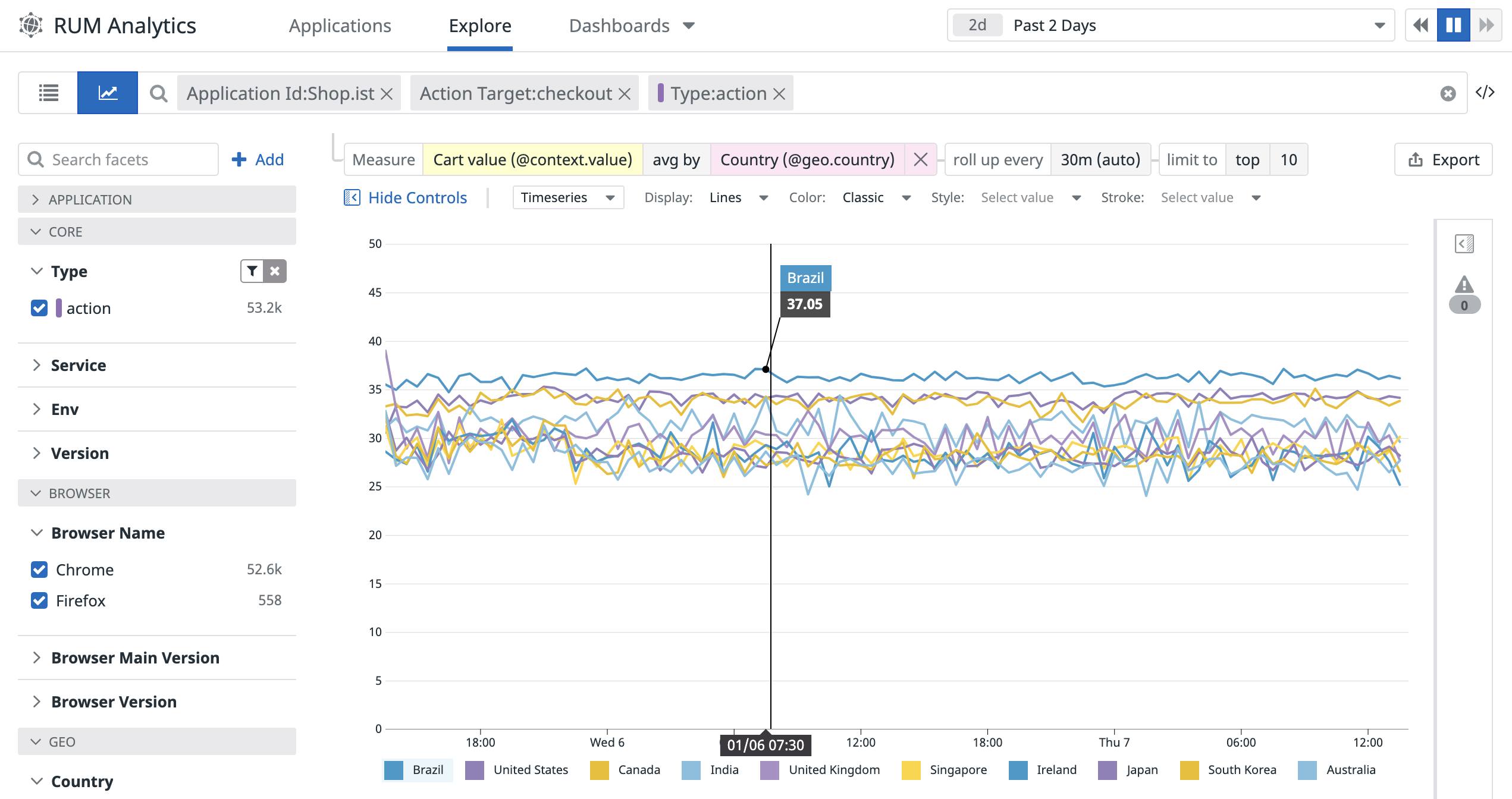- Essentials
- Getting Started
- Agent
- API
- APM Tracing
- Containers
- Dashboards
- Database Monitoring
- Datadog
- Datadog Site
- DevSecOps
- Incident Management
- Integrations
- Internal Developer Portal
- Logs
- Monitors
- Notebooks
- OpenTelemetry
- Profiler
- Search
- Session Replay
- Security
- Serverless for AWS Lambda
- Software Delivery
- Synthetic Monitoring and Testing
- Tags
- Workflow Automation
- Learning Center
- Support
- Glossary
- Standard Attributes
- Guides
- Agent
- Integrations
- Developers
- Authorization
- DogStatsD
- Custom Checks
- Integrations
- Build an Integration with Datadog
- Create an Agent-based Integration
- Create an API-based Integration
- Create a Log Pipeline
- Integration Assets Reference
- Build a Marketplace Offering
- Create an Integration Dashboard
- Create a Monitor Template
- Create a Cloud SIEM Detection Rule
- Install Agent Integration Developer Tool
- Service Checks
- IDE Plugins
- Community
- Guides
- OpenTelemetry
- Administrator's Guide
- API
- Partners
- Datadog Mobile App
- DDSQL Reference
- CoScreen
- CoTerm
- Remote Configuration
- Cloudcraft (Standalone)
- In The App
- Dashboards
- Notebooks
- DDSQL Editor
- Reference Tables
- Sheets
- Monitors and Alerting
- Watchdog
- Metrics
- Bits AI
- Internal Developer Portal
- Error Tracking
- Change Tracking
- Service Management
- Service Level Objectives
- Incident Management
- On-Call
- Status Pages
- Event Management
- Case Management
- Actions & Remediations
- Infrastructure
- Cloudcraft
- Resource Catalog
- Universal Service Monitoring
- End User Device Monitoring
- Hosts
- Containers
- Processes
- Serverless
- Network Monitoring
- Storage Management
- Cloud Cost
- Application Performance
- APM
- APM Terms and Concepts
- Application Instrumentation
- APM Metrics Collection
- Trace Pipeline Configuration
- Correlate Traces with Other Telemetry
- Trace Explorer
- Recommendations
- Code Origin for Spans
- Service Observability
- Endpoint Observability
- Dynamic Instrumentation
- Live Debugger
- Error Tracking
- Data Security
- Guides
- Troubleshooting
- Continuous Profiler
- Database Monitoring
- Agent Integration Overhead
- Setup Architectures
- Setting Up Postgres
- Setting Up MySQL
- Setting Up SQL Server
- Setting Up Oracle
- Setting Up Amazon DocumentDB
- Setting Up MongoDB
- Connecting DBM and Traces
- Data Collected
- Exploring Database Hosts
- Exploring Query Metrics
- Exploring Query Samples
- Exploring Database Schemas
- Exploring Recommendations
- Troubleshooting
- Guides
- Data Streams Monitoring
- Data Jobs Monitoring
- Data Observability
- Digital Experience
- Real User Monitoring
- Synthetic Testing and Monitoring
- Continuous Testing
- Product Analytics
- Software Delivery
- CI Visibility
- CD Visibility
- Deployment Gates
- Test Optimization
- Code Coverage
- PR Gates
- DORA Metrics
- Feature Flags
- Security
- Security Overview
- Cloud SIEM
- Code Security
- Cloud Security
- App and API Protection
- Workload Protection
- Sensitive Data Scanner
- AI Observability
- Log Management
- Administration
Send RUM Custom Actions
Overview
Real User Monitoring automatically collects actions on your web application. You can collect additional events and timings such as form completions and business transactions.
Custom RUM actions allow you to monitor interesting events with all the relevant context attached. For example, the Datadog Browser SDK can collect a user’s checkout information (such as the number of items within the cart, the list of items, and how much value the cart items are worth) when they click the checkout button on an e-commerce website.
Instrument your code
Create a RUM action using the addAction API. Give your action a name and attach context attributes in the form of a JavaScript object.
The following example creates a checkout action with details about the user cart when the user clicks on the checkout button.
import { datadogRum } from '@datadog/browser-rum';
function onCheckoutButtonClick(cart) {
datadogRum.addAction('checkout', {
'value': cart.value, // for example, 42.12
'items': cart.items, // for example, ['tomato', 'strawberries']
})
}
Ensure that you wrap the API call with the onReady callback:
function onCheckoutButtonClick(cart) {
window.DD_RUM.onReady(function() {
window.DD_RUM.addAction('checkout', {
'value': cart.value, // for example, 42.12
'items': cart.items, // for example, ['tomato', 'strawberries']
})
})
}
Ensure that you check for window.DD_RUM before the API call:
window.DD_RUM && window.DD_RUM.addAction('<NAME>', '<JSON_OBJECT>');
function onCheckoutButtonClick(cart) {
window.DD_RUM && window.DD_RUM.addAction('checkout', {
'value': cart.value, // for example, 42.12
'items': cart.items, // for example, ['tomato', 'strawberries']
})
}
All RUM context such as current page view information, geoIP data, and browser information, is automatically attached along with extra attributes provided with the Global Context API.
Create facets and measures on attributes
After deploying the code that creates your custom actions, they appear in the Actions tab of the RUM Explorer.
To filter on your custom actions, use the Action Target Name attribute: @action.target.name:<ACTION_NAME>.
The example below uses the following filter: @action.target.name:checkout.
After clicking on an action, a side panel with metadata appears. You can find your action attributes in the Custom Attributes section and create facets or measures for these attributes by clicking on them.
Use facets for distinctive values (IDs) and measures for quantitative values such as timings and latency. For example, create a facet for the cart items and a measure for the cart value.
Use attributes in the RUM Explorer
You can use action attributes along with facets and measures in the RUM Explorer to build dashboard widgets, monitors, and advanced queries.
The following example displays the average cart value per country in the last two days. Click the Export button to export the search query into a dashboard widget or monitor.
Further Reading
Additional helpful documentation, links, and articles:

